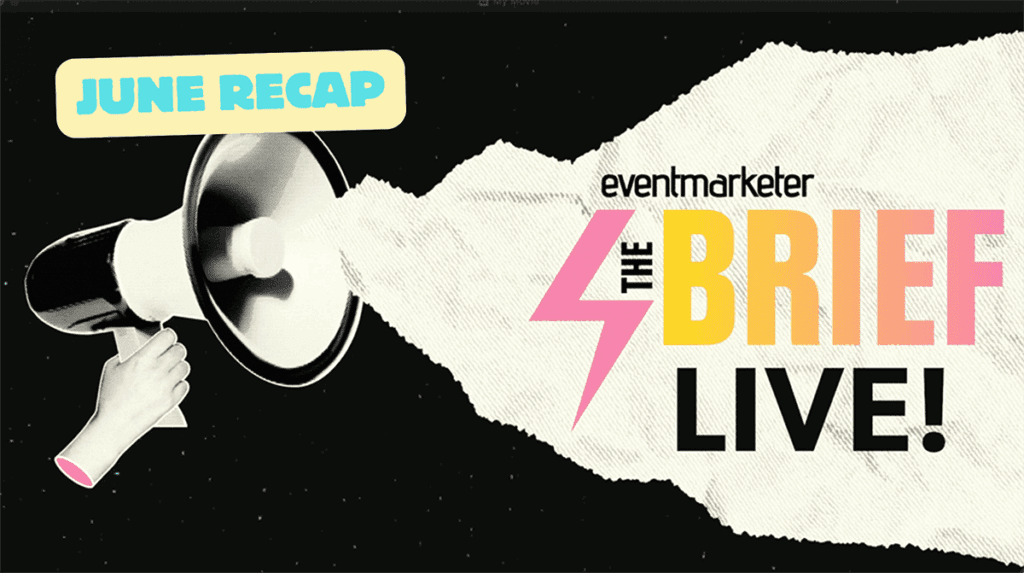Marketing budgets are tightening as people brace for economic uncertainty, and CMOs and marketing teams are being asked to do more with less. As a CMO, I’m always focused on ways our marketers can think and act bigger, which is largely driven by a “louder and prouder” mantra I learned from a mentor early in my career.
Brand amplification through partnerships, influencer marketing and advertising on a budget can be daunting. The constant pressure to produce more content often makes marketers feel burnt out.
Successful brand amplification requires streamlining your strategy by focusing on fewer, bigger initiatives and integrating key messages across channels. While each team may be working hard, they must be in sync and telling the same story to ensure your message breaks through.
It’s a marketing myth that an increased budget or a larger team will automatically solve your problems. This mentality can keep your team stuck when they should be thinking louder and prouder. In fact, there are several brand amplification myths I’ve seen throughout my career.
Myth: You need a big budget.
While there is no denying that it helps, you don’t need tons of money or endless resources. Sometimes, a bigger team or a larger budget can hold you back.
Hear me out. Scrappy teams tend to get creative out of necessity. They don’t rely on tried-and-true playbooks. They move fast and iterate quickly. Many assume you can’t go big without a big budget and team, but I’ve found the opposite is true. Scrappiness breeds innovation. You can be just as loud and proud but must act with focus and intention.
Myth: Paid media is always more important than organic.
Don’t get me wrong, advertising and paid tactics can have a massive role in an effective brand amplification effort, but investing a ton of money in a paid campaign doesn’t always pay off as most marketers think it will. Does that mean you should discontinue your advertising or performance marketing initiatives?
No. It means you shouldn’t become too reliant on them.
Look at the Swehl x Molly Baz triumph, for example. It wasn’t the billboard in Times Square itself that made the brand go viral. It was the organic response after it was taken down. The internet tuned in because people supported Swell’s ethos and mission. Building a brand worth caring about (by investing in earned and owned channels) is priceless.
Myth: Quantity is more important than quality.
If you only focus on volume, you’re just creating noise. Pushing your team to publish a specific number of social posts each week isn’t necessary and can negatively impact the quality of their output.
Ideally, you want to join, start and actively participate in conversations rather than blasting promotional content 24/7. It’s far more effective to paint your brand into the cultural zeitgeist than to constantly share updates that aren’t newsworthy. To do this, marketers should ask their teams to think creatively to tie their brand to a current cultural, timely moment.
Brand amplification levers to pull when you have a tight budget:
As marketing budgets tighten, more leaders are doubling down on paid and performance tactics. But there are plenty of effective ways to continue to build your brand without shelling out more cash. The key to making them louder and prouder is adopting a campaign mindset:
- Do fewer, more meaningful things.
- Unify your messaging across touchpoints.
- Have more impact.
There are several approaches you can weave into your brand amplification strategy.
Organic Social
A robust organic social media presence fosters authentic engagement and community and builds trust with your audience.
Unlike costly paid efforts, organic interactions nurture genuine connections with your followers and consistently deliver value-driven content. This enhances brand visibility and loyalty and leverages the power of social proof. It makes consumers want to promote your brand through shares and recommendations.
Investing in a strong organic social strategy means deepening customer relationships, driving long-term growth, and gathering insights directly from your audience that can inform broader business strategies.
Influencer Marketing
Influencers, with their dedicated followings and expertise in content creation, can offer a cost-effective channel for reaching targeted audiences.
Influencer marketing can reduce costs associated with traditional advertising methods and boost credibility and relatability through trustworthy endorsements. Recent research shows that 49% of consumers make purchases at least once a month because of influencer posts, and almost all (86%) make purchases at least once a year.
Leveraging the right influencer partnerships leads to increased brand awareness and sales. Influencers effectively sway consumer opinions and drive engagement, giving your brand a high return on investment through measurable, impactful results.
Influencer partnerships also don’t need to end when their content goes live. More than half (62%) of all consumers who make daily or weekly purchases based on influencers’ recommendations are likely to share product feedback directly with influencers. The influencers and creators you partner with have a direct view into your customers’ sentiment and feedback—insights that can help your brand pivot in real time and grow long-term.
Employee Advocacy
An employee advocacy program can be a brand’s greatest asset despite limited resources, changing algorithms and congested feeds. Advocacy programs help marketers amplify their brand’s reach without additional paid spending.
Content shared by employees receives more engagement and has a broader reach than content shared through official brand channels alone. It allows social users to see the real people behind your brand.
Brand Amplification Matters More Than Ever
The concept of louder and prouder marketing highlights the transformative power of a brand amplification strategy. It’s not about increasing volume but improving unity and clarity across everything you do.
Effective brand amplification doesn’t require large budgets—it thrives on creativity, strategic focus and integration. To extend your brand’s reach and stand out in today’s market, you must think beyond your closely held beliefs and explore how building your brand pays dividends.
Scott Morris is CMO at Sprout Social.



 Network
Network

